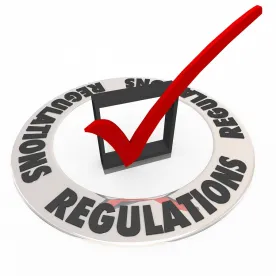Re-wind to May 2016 and you may recall the widely-reported story of a receptionist sent home from work without pay for wearing flat shoes in contravention of her agency’s dress code. The incident led to a joint report by the House of Commons Petitions Committee and Women and Equalities Committee, High Heels and Workplace Dress Codes, which called for a review of legislation around dress codes. While recommendations for legislative changes were promptly rejected, updated guidance was promised to address the issue of potentially discriminatory dress codes.
Two years on and hot on the heels of barefoot actresses on the ‘flat free’ red carpet in Cannes last month (was it a statement of political intent by Kirsten Stewart or did her feet just hurt?), the long-awaited guidance Dress codes and sex discrimination – what you need to know has finally strutted down the Government Equalities Office catwalk.
GEO Guidance
While it was hoped that the guidance would provide some much-needed clarity on the topic of dress codes, it actually provides little new insight. The brief 6 page publication is more of a whistle-stop tour of the types of potential discrimination to consider when setting a dress code. Despite its title, the guidance also addresses health and safety, reasonable adjustments for disabled employees, transgender employees and religious symbols as well as sex discrimination in the rules employers can lay down for their staff in this area.
The key points in the guidance are:
- Employers can legitimately set different dress codes for men and women, as long as they are of a similar standard and not applied more strictly to one sex over the other.
- It is likely to be unlawful to require female employees to wear high heels, as there is no male equivalent. Such a requirement may also amount to indirect discrimination against employees with disabilities. So Bette Midler may be correct that with the right shoes you can achieve world domination, but at least now you know that if ruling the world does not appeal on any given day, you don’t have to.
- Employers should not set dress codes which prohibit religious symbols that do not interfere with an employee’s work.
- Employers should permit transgender employees to follow the dress code in a way that matches their gender identity.
- The requirement to make reasonable adjustments for employees with disabilities could include not applying even gender-neutral dress code requirements in full where those requirements have a more onerous impact on the employee by reason of his/her disability. This doesn’t mean abandoning your code altogether – you would still be entitled to require as close an adherence to it as practicable (style, colour etc.) having regard to the limitations imposed by the disability.
What this means for employers
What the guidance doesn’t do is change the law as it currently stands in relation to dress codes and discrimination under the Equality Act 2010. It is brief and vaguer than expected, but taken alongside the existing legislation and case law it does provide some direction on what to consider when setting or changing a dress code. Here are some tips for setting dress codes:
- Try to keep the requirements of the code as broad as possible, using terms such as ‘business attire’ or ‘smartly dressed’ rather than prescribing particular articles of clothing.
- Avoid gender specific provisions, for example, allow both men and women to wear low-heeled shoes and trousers. This does not mean that you have to treat both men and women exactly the same. For example, a requirement for male employees to have tidy hair may be acceptable if female employees are also required to keep their hair smart and tie long hair back.
- Consider the reasoning behind each requirement and what it is aiming to achieve. Is the requirement necessary or the only means to achieve the aim? As soon as your code begins to prejudice certain of your staff because of their religion or disability, for example, you will need to be able to justify your requirements, and that means showing that you have a legitimate business objective and no less discriminatory alternative to achieving it. This will depend on the circumstances. Does the individual have a role involving a lot of client contact? Is the industry particularly fussy? What corporate image are you seeking to project? Is it somewhere legitimately posh or is it (as the Tribunal said witheringly in Eales – v – Halfords, a case about dyed yellow hair) just a “bicycle shop in Mansfield”?
- Consult employees, staff organisations and/or trade unions where appropriate, with a view to ensuring that the dress code is acceptable to both the employer and employees.
- Avoid setting dress codes that could be considered provocative, such as requirements to wear tight or revealing clothes, make up, skirts, etc., whatever your gender.
- If you have a dress code, enforce it promptly (to prevent a custom and practice weakening of its strictures) and even-handedly.
- And last, some other tips on things not to say in your dress code from the employmentlawworldview.com Fashion Desk:
- “One is never over-dressed or under-dressed with a Little Black Dress” – Karl Lagerfeld;
- “When in doubt, wear red” – Bill Blass;
- “How can you live the high-life if you do not wear the high heels?” – Sonia Rykiel; and
- “The real proof of an elegant woman is what is on her feet” – Christian Dior.
Although if said to your workforce across the board, you could probably get away with:
- “People will stare – make it worth their while” – Harry Winston.
Hannah Field wrote this article.



 />i
/>i

